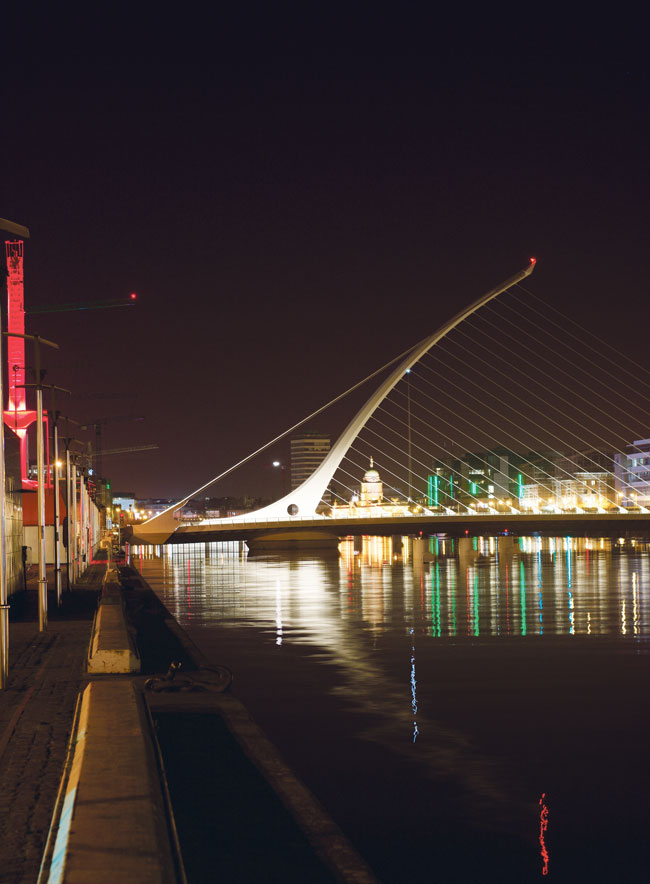The appeal of Dublin to tourists from both near and far-flung corners is palpable to those of us who frequent the city centre on a regular basis. Trinity students are well versed in how to artfully avoid a flock of leisurely German or Spanish sightseers in a dash to your 9am lecture. We have all most likely played the role as a clueless extra in the famous Campanile photo op, destined to be immortalised as a nameless face in the back of some American’s souvenir photo.
Of course, a consistent flock of tourists is a positive note for our economy and for the appreciation of our beloved capital, but, as I walk through Dublin these days, I can’t help but want to pull an innocent tourist aside and ask them: why?
Perhaps not appreciating the place you grew up in is a universal phenomenon, a necessary rite of passage, regardless of what part of the world. Maybe even Parisians walk past the Eiffel tower so often on their daily commute that it begins to evoke the same feeble amount of awe as the RTÉ radio tower and, perhaps the French stifle their scowls as Irish tourists give in to the signature Instagram pose in front of the Louvre pyramid.
Maybe nothing possesses the same charm when it is merely another piece of your hometown’s furniture and the very premise of tourism is surface level, dipping into the pleasant aspects of a city while not staying long enough to uncover the not-so-pleasant aspects.
Perhaps not appreciating the place you grew up in is a universal phenomenon
As for Dublin, I grew up here, in the suburbs. The city centre has always been “town” and never further than a 20-minute bus journey away. I chose to go to university here, in the very thick of the city itself. As a born-and-bred Dubliner who has yet to venture to live anywhere else, I feel that there is an unwritten rule that I should be proud to live and study here, to give recommendations to my visiting friends of all the brilliant things Dublin has to offer. But, I always find myself falling short of wearing this proud, Dublin identity, and taking on a far more self-deprecating stance than that of the enthusiastic local. Having travelled to numerous European cities on holiday, I can’t help but use Dublin as a frame of reference.
In comparison to distinctly larger metropolises like Amsterdam and Berlin, Dublin seems to fall starkly behind. Even Edinburgh, a not-too-distant or culturally different counterpart, impressed me immensely when I visited with its cleaner streets, better transport system and a plethora of things to do and see that didn’t involve pub crawls. Most importantly, however, Edinburgh seemed to wear a tangible sense of its own character – to know exactly who it was. With Dublin, I can’t help but feel like I am battling a constant identity struggle.
Dublin feels like many things all at once. There is a certain charm to it with its mismatch of old, redbrick Georgian townhouses, remnants of the Imperial London it was modelled on, and the stark juxtaposition with cubic monoliths of the 70s and 80s. Yet, even this quaint, historical version of Dublin is changing – a 20-minute walk away from Trinity’s colonial oasis lies the Dublin docklands, a dystopian business district, home to multi-national corporations like Google and Facebook, which carries the clean-cut cleanliness of a stock photo. This contrasting realm seems to be a glimpse into a future Dublin, its promise lying in crane-filled skylines and ubiquitous construction sites.
Bridging the Docklands is the Samuel Beckett bridge, a sleek homage to the famous Irish writer, designed to resemble the Irish national emblem of the harp. Designed by a Spaniard and built by the Dutch, the bridge, I believe, perfectly embodies this juxtaposed sense of Dublin. The gritty, poetic, brick-laden and imperfect Dublin of Beckett and his contemporaries with the new immaculate promise of a changing modern city, one that seems to paradoxically lose itself in the pursuit of coming into its own.
Even Edinburgh, a not-too-distant or culturally different counterpart, impressed me immensely when I saw with its cleaner streets and better public transport system
The city has certainly changed since I was younger and will continue to do so without me. Yet even in the imperfection and undecidedness of a Dublin with jagged edges and architectural dissonance, I do always find things to be proud of. I fear, however, that should I leave Dublin to live elsewhere, I may return to a city that is unrecognisable as my own. I can only hope that the future will not force my relationship with my city to transform me into feeling like merely another tourist, shaking hands with its surface tokens and forgetting the authentic nature of Dublin itself.







